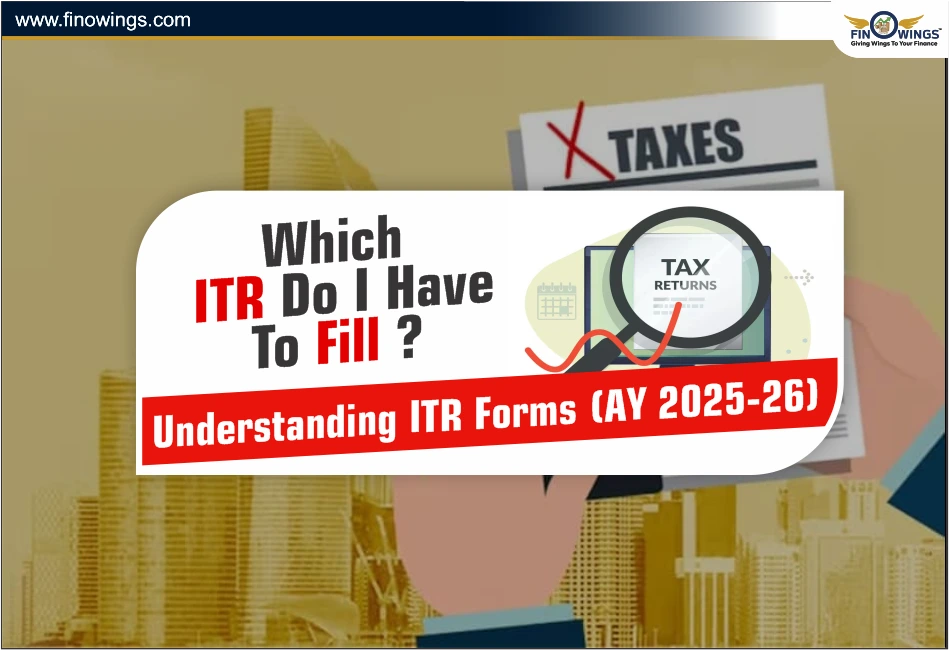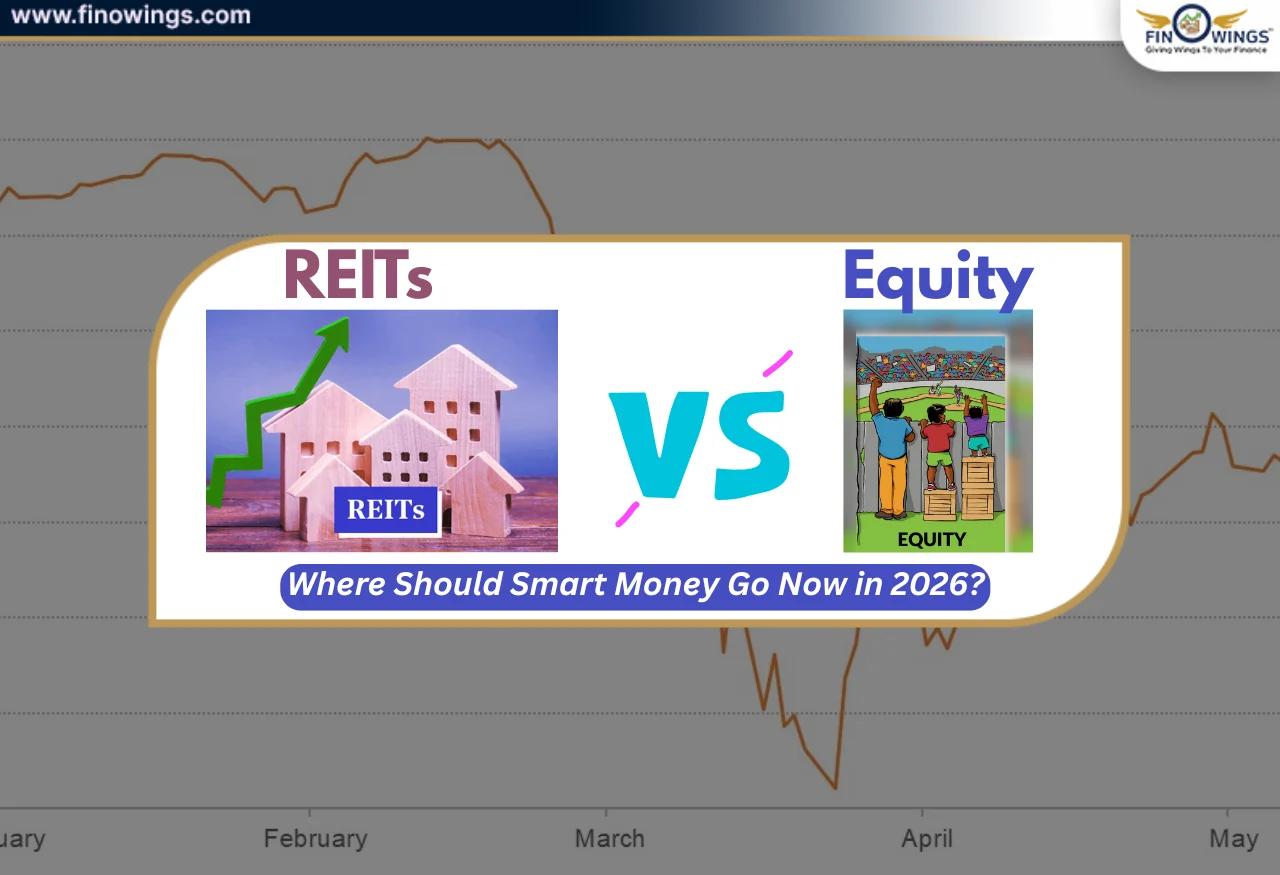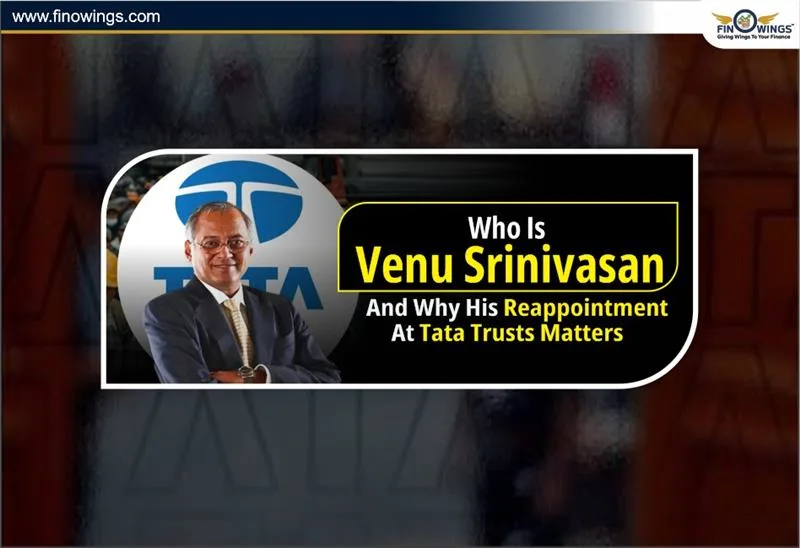Home >> Blog >> Which ITR to File? Understanding ITR Forms (AY 2025-26)
Which ITR to File? Understanding ITR Forms (AY 2025-26)

Table of Contents
The Central Board of Direct Taxes (CBDT) releases Income Tax Return or ITR forms, which outline the steps that must be taken. The several sorts of ITR forms and which ones salaried employees must file will be explained in detail in this blog.
For those with long-term capital gains (LTCG) up to Rs. 1.25 lac, the Board has uploaded Forms ITR-1 (SAHAJ) and ITR-4 (SUGAM), making it simpler for the citizens to file the tax for the Financial Year (FY 25-26) or Assessment Year (AY 2025-26).
ITR-1, ITR-2, ITR-3, ITR-4, ITR-5, ITR-6, and ITR-7 are the seven forms for which the board has issued.
Income Tax Return (ITR) Definition
ITR or Income Tax Return is a kind of form in which eligible taxpayers file their income earned in a preceding financial year and the taxes applicable to the Income Tax Department.
Types of ITR: Which ITR Form to File?
This section will tell you which ITR form you have to file from the different types of ITR for FY25- 26.
ITR-1 or SAHAJ
Choose ITR-1 or SAHAJ if-
-
You’re a resident individual.
-
Have a total earnings of up to Rs. 50 lac from pensions or salaries; or
-
Income from One House Property (except from situations in which a loss from a prior year is carried forward); or
-
Income from Other Sources (excluding lottery winnings and race horse revenue).
-
Income from long-term capital gains up to Rs. 1.25 lac (without any capital losses moved forward or carried forward).
-
Income from agriculture up to Rs. 5,000.
Don’t choose ITR-1 if-
-
Your income is more than Rs. 50 lac.
-
Agricultural income exceeding Rs. 5000.
-
Have taxable capital gains.
-
Business or professional income.
-
More than one house property income.
-
Appearance as a Director in a company.
-
Purchased unlisted stock at any point throughout the fiscal year.
-
Possessing assets (including any financial interest in any entity) outside India also includes signing authority in any account outside India.
-
You are a non-resident and a resident not ordinarily resident (RNOR).
-
Any foreign income.
-
If assessable under the income of another person, which tax is deducted at source from that other person.
-
If tax has been deducted under Section 194N.
-
If payment or deduction of tax has been deferred in the case of the valuation of ESOP.
-
In case you have any brought forward loss or loss has to be carried forward under any head of income.
Explore to know how you can open a Sukanya Samriddhi Account
ITR-2
Choose ITR-2 if-
You are an individual or a Hindu Undivided Family (HUF) taxpayer. Total income for the AY25 - 26 contains the following-
-
Salary/Pension Income.
-
Income from Property Sources.
-
Other Income Sources (including Winnings from Lottery and Income from Race Horses).
-
Individual Director in a company.
-
If you are holding investments in unlisted equity shares during the financial year.
-
Being a resident-not-ordinarily resident (RNOR) and non-resident.
-
Income from Capital Gains.
-
Have foreign income.
-
Agricultural income greater than Rs. 5,000.
-
Holding assets (including financial interest in any entity) outside India, including signing authority in any account located outside India.
-
As per Section 194N, tax is withheld.
-
Where there is a payment or deduction of tax on ESOPs deferred.
-
Any brought forward loss or losses required to be carried over under any income head.
Next, in the case where the income of another person, like a spouse, child, etc, is to be included in the income of the assessee, this Return Form may be used to the extent that such income falls in any of the above categories.
Income may exceed Rs 50 lac.
Don’t choose ITR-2 if-
-
Total income for the FY25 - 26 includes income from business or a profession.
-
You might need to utilize ITR-3 or ITR-4 to declare certain kinds of income.

ITR1 vs ITR2: Difference between ITR-1 and 2
Below is a comparative analysis of key differences between ITR-1 (SAHAJ) and ITR-2 in the following regards:
1. Eligibility Based on Income Limit
ITR-1: applicable for individuals whose income exceeds Rs. 50 lac.
ITR-2: An individual whose income exceeds Rs. 50 lac may file ITR-2.
2. Capital Gains
ITR-1: Long-term capital gains not exceeding Rs. 1.25 lac without the condition of any carried forward capital losses can only be declared through this form.
ITR-2: Applicable in cases in which any capital gains were realised, including taxable capital gains and carried forward losses.
3. House Property
ITR-1: Income from one house property is allowed without bringing forward a loss.
ITR-2: To avail income from more than one house property and with carried forward losses.
4. Residential Status
ITR-1: All Resident Individuals.
ITR-2: All Resident, Resident Not Ordinarily Resident (RNOR), and Non-Resident Individuals.
5. Foreign Assets and Directorship
ITR-1: Not applicable in case a person is a director in a company or holds foreign assets/financial interests.
ITR-2: Required for individuals who are company directors, own unlisted shares, or hold/sign foreign assets/accounts.
ITR-3
Choose ITR-3 if-
If you are an individual or a Hindu Undivided Family that earns income by carrying on a business in sole proprietorship or is carrying on a business in a profession. All persons earning from the following sources are eligible to file ITR-3-
-
Carrying on life in a business or profession that requires maintaining accounts or getting them audited.
-
For investments in unlisted equity shares in the financial year.
-
The return can also show income from House property, Salary/Pension, and income from other sources, as the same person.
-
Income of a partner in a partnership firm.
Therefore, people or HUFs who are not entitled to file ITR-1, ITR-2, or ITR-4 should file ITR-3.
ITR-4 or Sugam
Choose ITR-4 or Sugam if-
You are among individuals, HUFs, and Partnershipies, excluding those constituted as LLPs, who were making the application of the current ITR-4, provided that they are residents with a total income of:
-
Total income up to Rs. 50 lac.
-
Professional income is presumptive under section 44AD or 44AE.
-
Professional income being presumptive under section 44ADA.
-
Income from salary or pension.
-
Income from one house property (excluding the amount of brought forward loss or loss to be carried forward).
-
Income from other sources (not being income from lottery and race-horses).
-
Long-term capital gains income up to Rs. 1.25 lac (not having a capital loss that can be carried forward or brought forward).
Please note that in case of an individual earning income from the above sources as a freelancer, he has the option of going in for the presumptive scheme so long as his gross receipts do not exceed Rs. 50 lac.
A presumptive income scheme under sections 44AD, 44AE, and 44ADA is a scheme in which the taxpayer elects to be assessed based on its income that is presumed to have been earned at a minimum rate according to the % of gross receipts or gross turnover or on the basis of ownership of commercial vehicles. Even if the turnover of the business is more than Rs. 2 crore, then such assessee must file an ITR-3.
Don’t choose ITR-4 if-
-
Your total income is above Rs. 50 lac.
-
You have income from more than one house property.
-
You own a foreign asset.
-
You have signing authority in any overseas account.
-
You have income from any source abroad.
-
You are a director in any foreign company.
-
When any investment in unlisted equity shares was made during a financial year.
-
It must really be a resident not ordinarily resident (RNOR) or non-resident.
-
On foreign income or foreign assets.
-
If you are assessable in respect of the income of another person on which tax has been deducted in the hands of the other person.
-
In case of ESOP payment or deduction of tax has been postponed.
-
If you have any loss of the nature mentioned in any of the income heads that you wish to carry forward.
ITR-5
LLPs (Limited Liability Partnerships), AOPs (Association of Persons), BOIs (Body of Individuals), Artificial Juridical Persons (AJPs), business trusts, investment funds, and the estates of the deceased and insolvent are all covered by ITR-5.
ITR-6
This return must only be submitted online by businesses that are not exempt from section 11 (income from property held for charity or religious purposes).
ITR-7
-
According to section 139(4B), a political party must file a return if its total revenue exceeds the maximum amount exempt from income tax, except for the restrictions of section 139A.
-
A return under section 139(4C) is to be filed by every-
-
Scientific Research Association
-
News Agency
-
Association or institution referred to in section 10(23A)
-
Institution referred to in section 10(23B)
-
A fund or any institution or university or other educational institution or any medical institution.
-
Under section 139(4D), universities, colleges, and other institutions not required to furnish income or loss returns under any other provision of this section shall file their return.
-
Return under section 139(4E): A business trust may file a return under this section even if it is not obligated to provide a return of income or loss under any other provisions of this section.
(Source: cleartax)
How to Download ITR-1 to ITR-7 Forms
ITR-1: Click to download ITR-1 form
ITR-2: Click to download ITR-2 form
ITR-3: Click to download ITR-3 form
ITR-4: Click to download ITR-4 form
ITR-5: Click to download ITR-5 form
ITR-6: Click to download ITR-6 form
ITR-7: Click to download ITR-7 form
(Source: incometaxindia)
Conclusion
Every eligible taxpayer is required to make sure that their form matches their income. A mismatch in the selected ITR form may result in complications, undue scrutiny, and notice communications from the Income Tax Department. Double-check that the most recent eligibility criteria are met while submitting the return online.
Author
Frequently Asked Questions
For filing income tax returns, individuals and Hindu Undivided Families (HUFs) use ITR-2 in case they do not earn income from business or profession. Generally, it is applicable for people whose income comes from sources such as salary, pension, capital gains, and other sources.
The distinction between ITR 1 and ITR 2 is essentially that ITR 1 caters to individual taxpayers earning a salary income of less than Rs. 50 lakhs, whereas ITR 2 is meant for taxpayers on whom capital gains are conferred, with multiple house properties.
Salaried Employees must file ITR 3 in case they want to make income from business or occupation, in addition to their salary income.
In that case, a late-filing fee will apply. The late-filing fee, Schedule 4 C, sets out a late-filing penalty of Rs. 5,000 if the ITR was not filed within the due date. This may be reduced to Rs. 1,000 in case the income of the assessee is less than Rs. 5 lac.





.webp)














